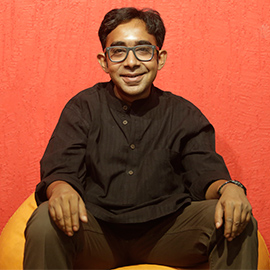Arunachal governor Rajkhowa's sacking highlights a gap in the Constitution

On Monday, 12 September, President Pranab Mukherjee directed Arunachal Pradesh governor Jyoti Prasad Rajkhowa to step down.
This had been imminent for a while now - Rajkhowa had himself said the Centre was trying to make him vacate office on the grounds of ill health, while he was 'in the pink of health'. He challenged the government to get the President to sack him.
Home Minister Rajnath Singh reportedly told Rajkhowa that the order had come from the 'highest quarters'. Yet, reports also claim Singh himself met the President and pressed for Rajkhowa's dismissal.
It is now widely known that Rajkhowa imposed President's Rule in Arunachal Pradesh at the behest of the Narendra Modi-led Central government. And for that, he got walloped by the Supreme Court, which, in its 13 July 2016 ruling, minced no words in accusing him of being complicit in trying to topple a democratically-elected government.
But then, Rajkhowa was not acting of his own volition, because the Constitution directs the Governor as well as the President to act upon the aid and advice of the Cabinet. So, is the Centre's action a face-saving gesture for itself?
However, there are far more important questions to address.
Grounds for appointment and dismissal
There are certain 'silences' or gaps in the Constitution which, ironically, create a furore from time to time. The lack of specific provisions regarding how governors are to be appointed, and how they are to be dismissed is one such example.
This void in the Constitution, especially the vaguely worded "Doctrine of Presidential Pleasure", as mentioned in Article 156, has resulted in a situation which is nothing short of a Raj Bhavan roulette of sorts.
It is common for political parties ruling at the Centre to appoint governors of their choice in the states. Starting right from the time of Indira Gandhi, this has become the usual practice. The Congress-led UPA government also did the same when it came back to power in 2004.
There was a big outcry and scaremongering about the BJP government storming into power in 2014 and sacking governors en masse, starting with Kamla Beniwal, who, as governor of Gujarat, had been a thorn in then-CM Modi's side.
Then it was the turn of Mizoram governor, Aziz Qureshi, who moved the Supreme Court in 2014. The court observed that such summary dismissal of high constitutional dignitaries like governors was a depreciable practice.
On 7 May 2010, the apex court had clearly stated that governors were not to be "rubber stamps" of the Centre in the states, and could not be dismissed merely because their ideologies were at loggerheads with the top bosses at the Centre.
'Presidential Pleasure' and its limits
So what does "Presidential Pleasure" mean? What is its scope and ambit?
This doctrine was evolved in 1979, when a bench of five Supreme Court judges deliberated upon the criteria of gubernatorial eligibility. The appointment of Raghulal Tilak as governor of Rajasthan was under challenge.
The court ruled that since a governor is appointed by the President, he is a Constitutional functionary, not an employee or servant of the Government of India. Only when a governor loses the confidence of the President can he be removed.
Enjoying the confidence of the President - termed the doctrine of "Presidential Pleasure" - is contingent upon certain conditions. The most important is that the President doesn't have a free hand. He is bound to act on the advice of the Council of Ministers. This leaves a clear route for Central governments to follow to remove governors undesirable to them.
After the Rajkhowa imbroglio, the time is ripe to define the limits of "Presidential Pleasure" and the government's whims and fancies. Else, political integrity would be in peril.
Edited by Shreyas Sharma
More in Catch
President directs Arunachal Pradesh Governor Jyoti Prasad Rajkhowa to step down
Buta Singh Redux? Why it's looking ominous for Rajkhowa in SC
First published: 13 September 2016, 8:45 IST





![BJP's Kapil Mishra recreates Shankar Mahadevan’s ‘Breathless’ song to highlight Delhi pollution [WATCH] BJP's Kapil Mishra recreates Shankar Mahadevan’s ‘Breathless’ song to highlight Delhi pollution [WATCH]](https://images.catchnews.com/upload/2022/11/03/kapil-mishra_240884_300x172.png)

![Anupam Kher shares pictures of his toned body on 67th birthday [MUST SEE] Anupam Kher shares pictures of his toned body on 67th birthday [MUST SEE]](https://images.catchnews.com/upload/2022/03/07/Anupam_kher_231145_300x172.jpg)






